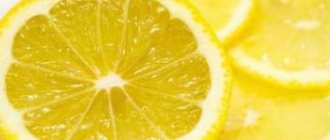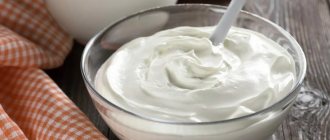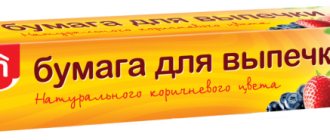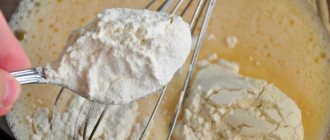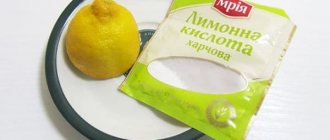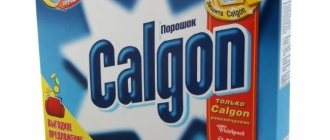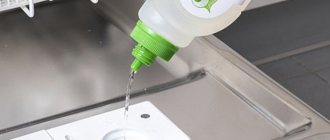| What can replace lemon and its juice? | Description |
| Alternative for drinks | Lemon juice contains a large amount of vitamin C, so it is often included in various “vitamin” cocktails. Other citrus fruits are suitable instead, for example:
They are also rich in vitamins, so they will be a good alternative. |
| Fruit juices | In baked goods or in salads, a good replacement would be the same sour juices, which contain a large percentage of vitamin C. This can be the juice of sour apples or grapefruit. The following juice is suitable for homemade mayonnaise or for slaking soda:
Various sugar-free berry concentrates are also suitable. |
| Berries | Berries are a good substitute for lemon in a meat marinade. They not only have a vitamin-rich composition, but also allow you to saturate the dish with a pleasant berry taste. Berry juices have a beneficial effect on the condition of the skin, digestive functions, and the immune system. |
| Vinegar | In solyanka it is permissible to use not only lemon zest and juice, but also vinegar. It is also relevant in baking and other dishes. Vinegar works best as an alternative:
|
| Lemon acid | This is the most successful option not only for cooking fish, but also for other dishes. It just needs to be dissolved in water and then added to the dish. If you need to soften the sour taste, you can use honey. In some cases, the powder can be added to a dish without diluting with water, for example, in a salad. |
Lemon, and in particular its juice, is widely used in cooking. Quite often it acts as an excellent means for cleaning kettles, microwaves, and washing machines from dirt and scale.
Lemon juice is added to baked goods and used when preparing fish. It makes the taste and aroma of the dish more pronounced and helps make the dough more fluffy.
If during the preparation of a particular dish this product is not on hand, the question arises of what can replace the lemon. There are several alternative products that can be used as a complete replacement.
Lime juice
Lime juice is the best substitute for lemon juice as it can be used as a one-to-one substitute and has a very similar taste and acidity level.
In fact, when canning food, it is an ideal substitute for lemon juice because it has a similar pH level. Other substitutes, such as vinegar, are less acidic and may cause the product to last for a shorter period of time.
In desserts where lemon juice is a key ingredient, lime juice adds a slightly different flavor. However, you will still end up with a tart and citrusy flavor.
Replacement of lemon in cooking
- In salad dressings . Forget about mayonnaise as a salad dressing. There are easier, healthier and tastier alternatives. For example, lemon juice. If it is not nearby, use any vinegar - wine, apple, raspberry or balsamic.
- For the marinade .
Kebab lovers know: for a successful marinade you need three ingredients - acid, vegetable oil and aromatics. The acid softens the fibers of the fabric, making the meat softer so that the oils, spices and herbs can be absorbed. As you can see, there’s nowhere without acid. What to do if you don’t have fresh lemon on hand? Use citric acid. It is sold in any store. In addition, small bags are convenient to take with you on trips to nature - they take up very little space. - In conservation .
What is not canned for the winter: vegetables, fruits, mushrooms, berries, meat, fish. And in almost every recipe there is a place for lemon juice, which is a preservative and softens the taste. There is no big difference between using juice or acid. These products are interchangeable. Want something new? Add sour berries instead: lingonberries, cranberries, red currants, rowan. - For the sauce . There are many different sauces: from the well-known mayonnaise and ketchup to the most exotic. The lemon juice in them adds a piquant sourness. But don't be afraid to experiment and replace it with acids and vinegars. In addition, there is a sour oriental spice, sumac, which is traditionally added to sauces intended for meat.
- For drinks. A well-known rule for maintaining health is to drink a glass of water in the morning on an empty stomach. Lemon juice is often added there because it contains a lot of vitamins, acids and minerals. This drink improves digestion, tones the body and stimulates brain activity. However, water with the juice of any citrus fruit will have the same properties: orange, tangerine, grapefruit, lime. They are also high in vitamin C.
In addition to drinks for health, there are drinks for the soul. Of course, we are talking about lemonades. Despite the fact that the name itself contains the main ingredient - lemon, its juice can always be replaced with the juice of another citrus fruit.The taste will change a little, but what if this option becomes your favorite?
- For baking . Do you want to give your baked goods a pleasant taste with a slight sourness? Add lemon juice to the dough. If you don't have juice on hand, use acid.
- For desserts . Lemon juice is used in the preparation of mousses, jams, meringues, creams, and glazes. Replace it with citric acid or the juice of another citrus. In the latter case, the dessert will acquire a new unusual taste.
- For mayonnaise . Nowadays you can buy mayonnaise in any supermarket, but some housewives make it themselves. It should contain an acid, which is often used as lemon juice. But nothing bad will happen if you replace it with citric acid or vinegar.
Proportions
Be careful with the proportions: different varieties have different levels of acidity. Juice of 1 lemon = 5 grams of citric acid = 1 tablespoon of vinegar = equal volume of juice of another citrus.
Advantages and disadvantages
Sometimes lemon juice is substituted because of an allergy, sometimes for the sake of variety, sometimes because it simply isn’t on hand. How will this affect the result?
pros:
- Saving . Recipes most often do not require the whole lemon, but, unfortunately, you cannot buy a slice. So the lemon sits in the refrigerator, and then, completely dry, it goes into the trash. This will not happen if you use citric acid or vinegar, which are sold in bags and bottles, respectively. You will definitely use them completely, since they last longer.
- Variety of taste . The dish will sparkle with new colors if you add other citrus juices, sour berries or even sumac (a sour oriental spice). Modern nutritionists claim that a varied diet prevents overeating.
- Rescue from allergies . Replacing lemon juice with other ingredients can allow allergy sufferers to enjoy gastronomic delights without harm to their health.
Minuses:
- There may be errors in proportions.
- Using vinegar can be dangerous for people suffering from diseases of the gastrointestinal tract, gastritis, and ulcers.
As you can see, there are not many disadvantages, but they are worth keeping in mind.
Lemon acid
Citric acid is a naturally occurring acid found in lemon juice, making powdered citric acid an excellent substitute for lemon juice, especially in baking.
One teaspoon (5 grams) of citric acid is equal in acidity to about 1/2 cup (120 ml) of lemon juice. This way, only a very small amount is required and you will need to make changes to the recipe.
To maintain the correct ratio of dry to wet ingredients, you may also need to add additional liquid to the recipe.
Plus, using citric acid in baking can even prevent certain vitamins and antioxidants from being destroyed during cooking.
What recipes use lemon juice?
It is generally accepted that the most valuable substance that lemon has is ascorbic acid. It is able to tone the body, improves memory and concentration, and is also the number one remedy for the development of an inflammatory process in the body or an infectious disease. It has low calorie content.
As for its use in cooking, in this area lemon juice is also in demand and loved by housewives. It is good in the following cases:
- As a salad dressing, it is often one of the ingredients in the sauce.
- In pickling cucumbers or tomatoes.
- Suitable for preparing thirst-quenching drinks.
- A common component in cream recipes.
To enhance the taste of the selected spices for meat or fish, before placing the product in the oven, be sure to pour a small amount of juice over it. It is worth noting that lemon juice makes the texture of meat softer.
To replace fresh citrus, you can purchase concentrate. It is sold in many grocery hypermarkets. Unlike the lemon itself, such a solution will always be on hand, it can be stored for a long time, and the taste is the same.
Potassium hydrogen tartrate (tartar)
Potassium hydrogen tartrate is an acidic powder sold in the baking section of most grocery stores.
Although it has many culinary uses, it is commonly used to stabilize the foam of egg whites or whipped cream. It is also included in baking powder.
Because it is sour, it can be used as a decent substitute for lemon juice in baking. Some websites suggest using 1/2 teaspoon potassium hydrogen tartarate for every 1 teaspoon lemon juice as directed in the recipe.
Keep in mind that you may need to add additional liquid to account for the lack of liquid in the cream of tartar.
Substitution with vinegar
As a rule, the lack of lemon is a serious problem when preparing dessert dishes: pastries, cakes and various creams. However, skillful housewives have long found a way out of the situation and do not worry when there is no citrus at home, and do not run to the store to complete their idea.
You can easily replace lemon juice with vinegar. Almost every home has a wine or apple store. In this case, 1 tbsp will be enough. l. natural vinegar.
In extreme cases, a 6% concentration of an ordinary table will do. It can be used for making sweet creams and for seasoning cold dishes. Table vinegar is mixed with olive oil. A particularly tasty dressing is obtained when preparing light salads in the summer. If a 9% solution is used, it is recommended to dilute it with water in an equal ratio.
Five tablespoons of regular table vinegar can replace half a cup of citric acid. That is, this method turns out to be more economical.
Summarize
- There are several ways to substitute lemon juice in cooking and baking.
- However, lime juice is the most ideal substitute as it is very similar to lemon juice.
- Keep in mind that when using a powdered or highly concentrated lemon juice substitute such as citric acid or lemon extract, you may need to add additional liquid to maintain the correct wet-to-dry ratio.
- The above lemon juice substitutes will ensure that you can continue cooking despite the lack of lemon juice.
Berries
Berries are probably the best alternative to lemon. They, of course, are not able to replicate the taste of lemon, but they will add the necessary sourness to the dish and saturate it with vitamins.
Eating berries has a beneficial effect on:
- skin condition;
- functioning of the digestive organs;
- immune system;
- health in general.
The berries would be appropriate in salads and jelly. This is a good addition to marinade or sauce for meat and fish. To prepare fish, it is better to use grape and pomegranate juices. Any berries can be added to jam, saturating it with vitamins, pleasant taste and aroma.
Chocolate glaze
Chocolate coating is one of the most popular sweet coatings for confectionery products.
Chocolate icing for gingerbread, a simple recipe.
It can be made from chocolate or cocoa. This glaze goes perfectly with honey gingerbread cookies.
What ingredients will be needed?
To prepare chocolate glaze with cocoa powder, take:
- powdered sugar – 160 g;
- butter – 50 g;
- cocoa powder – 40 g;
- water or milk – 60 ml.
If you take sweet cocoa like Nesquik, you may need less sugar.
Step-by-step cooking process
Prepare chocolate glaze as follows:
- In a separate container, combine powdered sugar and cocoa powder.
- Melt the butter in a small saucepan (you can use the microwave).
- Milk or water is boiled in a separate container - also a small saucepan or saucepan.
- Boiled milk (water) is poured into a mixture of powdered sugar and cocoa and stirred until smooth.
- Melted butter is added to the resulting mass.
What can I add?
Chocolate glaze with sour cream, which replaces butter, is no less tasty. Vanilla or cinnamon is also added to enhance the aroma.
Application rules
To coat gingerbread cookies, chocolate glaze should be used immediately, as it hardens quickly. It is suitable for both contouring gingerbread cookies and filling the surface.
With soy sauce and ginger
To marinate 1 kg of tiger shrimp you need to prepare:
- 60 ml soy sauce;
- ginger root;
- 2–3 cloves of garlic;
- ground pepper;
- salt to taste.
Preparation
- Peel the garlic and ginger and puree in a blender along with salt, pepper and soy sauce.
Classic recipe for protein powder glaze
In addition to their interesting taste, gingerbread is famous for its painting, which is done using different glazes. The simplest option is to cook it using freshly beaten egg whites with the addition of powdered sugar. This type of icing is also called royal icing.
What ingredients will be needed?
To prepare royal icing, take the following ingredients:
- chilled fresh whites from 3 eggs - you will get about 90 g of protein;
- lemon juice or concentrate – 0.5 tsp;
- fine powdered sugar – 0.4-0.5 kg.
It is not recommended to use ground powder yourself, as large sugar crystals remain in it, which may not have the best effect on the protein cream.
Step-by-step cooking process
First of all, you should prepare all the products and equipment (dishes, mixer) and make sure that they are clean.
The glaze preparation process itself includes the following steps:
- The whites should be carefully separated from the yolks, so that there are no yolk inclusions in them.
- The separated protein is poured into a mixer bowl or other convenient large container (not enamel) and begin beating. They begin to do this at minimum speed, gradually increasing the speed to medium power.
- When it becomes visually noticeable that bubbles have appeared on the whites, add lemon juice and begin to gradually introduce ground sugar.
- The mixture continues to be beaten until a white shine appears (until the so-called state of soft peaks). This takes from 5 to 8 minutes. (depending on the type of blender).
Application rules
Glaze for gingerbread prepared according to this recipe has several application options depending on how exactly the cookies are decorated:
- for contouring - in this case, glaze is used, brought to soft peaks. With its help, the outlines of gingerbread cookies are repeated and inscriptions are written. It is good because when applied to the gingerbread surface it does not spread;
- for gluing (“cementing”) - for this, the glaze is brought to hard peaks by adding powdered sugar. As a result, it becomes very thick and is used to create three-dimensional decor using confectionery attachments, 3D compositions and gingerbread houses;
- for filling - the resulting glaze, brought to soft peaks, is used to fill the surface of gingerbread cookies. For this purpose, the glaze is diluted with water.
In garlic sauce
Required ingredients:
- honey;
- half a glass of olive oil;
- garlic;
- ginger root;
- a stick of butter;
- two lemons;
- soy sauce;
- salt;
- freshly ground black pepper.
Cooking technique:
- First of all, you need to squeeze the juice out of the lemons. This can be done manually or using a juicer.
- Peel, rinse and grate the ginger root.
- Crush 4 cloves of garlic with the flat side of a knife. Clean. Chop it as finely as possible.
- Remove a regular stick of butter from the refrigerator in advance. Let it come to room temperature - the butter should become soft.
- In a separate bowl, mix olive oil, freshly squeezed juice, 50 ml of soy sauce, a few teaspoons of liquid flower honey, ginger and garlic, which you chopped in advance. Beat the mixture with a regular whisk or mixer until smooth. Add softened butter to the mixture and beat again.
Caramel glaze
Caramel glaze for gingerbread has an interesting taste thanks to the addition of toffee during cooking.
This type of candy can be melted, so it is often used by confectioners to create icing.
What ingredients will be needed?
For preparation take:
- powdered sugar -50 g;
- toffee (candy) – 230 g;
- butter – 50 g;
- milk - 65 ml.
Step-by-step cooking process
Prepare caramel glaze like this:
- The butter is cut and placed in a saucepan.
- Add milk and sweets to the butter, add sifted powder.
- Turn on moderate heat and cook, stirring, until the toffee is completely dissolved.
Application rules
Apply caramel glaze to gingerbread cookies using a spoon or a cellophane bag while hot.
Kalmyk tea
You will need:
- water – 1 l;
- milk – 1 l;
- green tea – 100 g;
- salt – 2 tsp;
- bay leaf – 4 pcs.;
- black pepper – 16 peas;
- ground nutmeg – 1 tsp;
- butter – 4 tbsp. l.;
- bergenia – 5 g;
- calamus and angelica - to taste.
Photo: istockphoto.com
Pour the tea with water, let it boil and cook over low heat for 10 minutes. Add a little milk and bring to a boil again. So pour in all the milk a little at a time. Add salt and spices. Cook for 5-7 minutes, then leave to brew for 10 minutes. Then mix thoroughly and strain.
